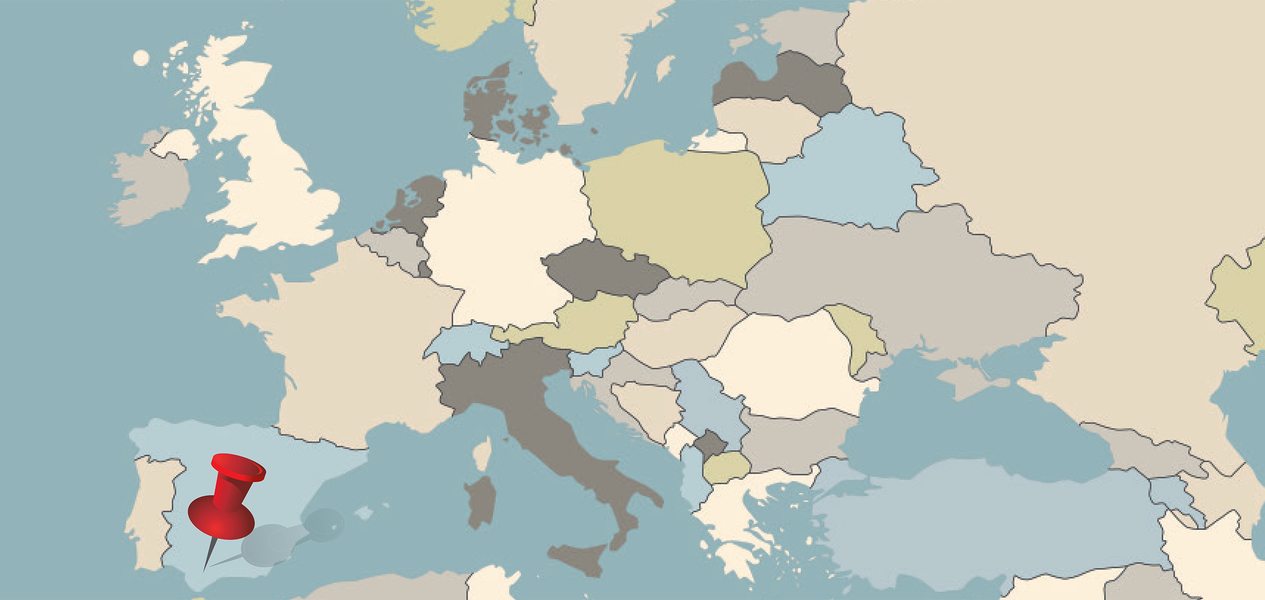Child development early warning system, Andalucía, Spain
Derren Hayes
Tuesday, January 29, 2019
Geographically, Andalucía is a mix of popular coastal resort cities and rural villages in the mountainous interior located in the southern region of Spain.

It is a large region with a widely dispersed population of around 8.5million people. Seville and Malaga are the main cities, with populations of 689,000 and 569,000 respectively.
The size of the region and rural nature of many of the communities present challenges for the planning, commissioning and delivery of public services, including pre-school support and early life care. Recognising this, regional authorities set about building an Early Warning Information System that helped them record the number of Andalucían children aged six and under with developmental problems and their family circumstances.
The online platform, introduced in 2011, includes three main types of information: general information about the family, data about the child's problem or health condition, and information about the child's school and socio-economic circumstances. Its overall aim is to aid commissioners and providers of services to put support in place earlier and enable better co-ordination of provision.
Examples of developmental disorders include autism, Williams syndrome, language and literacy disorders, Down's syndrome, Dyscalculia, and attention deficit hyperactivity disorder.
CULTURE AND SOCIETY
Andalucía has been a traditionally agricultural region, compared with the rest of Spain. However, it has a strong economy and its population has grown by 22 per cent in the past 30 years. Its climate - it has the highest average temperature of anywhere in Europe - has made it a popular retirement and holiday destination for British and other northern European citizens.
The region also has a rich culture and a strong identity. Its proximity to north Africa - the Spanish mainland and Morocco are around eight-miles apart - means the region's architecture, art and food have many Moorish influences. Moroccans make up around 18 per cent of all migrant citizens in Andalucía.
The region of Andalucía is governed by the Junta de Andalucía, which is comprised of three bodies: the Andalucían Parliament, the President of Andalucía, and the Government of Andalucía.
The Junta de Andalucía controls a ¤30bn annual budget, has 250,000 employees and manages a wide range of public services including education and health. It oversees rural development, and approves local planning policy, has an environmental policy, and is responsible for tourism promotion.
Children start compulsory education at six and there are high rates of take up for state-funded early years provision.
POLICY AND REGULATION
The regional ministry of health has been in charge of promoting early intervention in Andalucía since 2005, and holds the budget for funding services.
In 2009, the ministry of health of Andalucía enacted a resolution calling for the development of an early warning information system for the region. The tender was won by the company EVERIS and NTT DATA, which became responsible for the development of the various modules of the application in co-operation with the professionals working in early intervention centres and health services, under the supervision of a ministerial group of experts.
The system's introduction followed various reports that recommended the creation of an information system that covered all the services provided for children under six with developmental disorders, and for their families. The system would help identify the number and coverage of care services for young children with developmental difficulties and disabilities in Andalucía as well as risk factors, causes and types of disability in the region's children.
The system should also help to keep track of the existing early intervention resources, both public and private, which receive funding from the regional government as well as the catalogue of services and the intensity of the interventions that they provide.
Finally, the information system would act as a mechanism to ensure the continuity of care between health services and early intervention centres.
Spain also has its own national legislation on early intervention in childhood. This is underpinned by the UN Convention on the Rights of the Child and the European Social Charter.
Other notable legislation includes Social Integration regulations which are based on the first article of the Spanish Constitution reinforcing the dignity and right of disabled people to receive all the resources possible to care for their needs.
The eligible age in Andalucía for receiving early intervention services ranges from birth to six, and require children to be referred by a public agency and diagnosed with a condition.
Andalucía has early childhood intervention centres, special education centres, special education classrooms and support provided by therapeutic education professionals and hearing and language professionals.
PRACTICE
In terms of information about the child's health condition, the system includes a disability assessment and the degree of disability, information about the types of interventions provided and their intensity, and the professionals and resources involved.
Each child's file also includes information about the school or pre-school that they attend, the type of support and social benefits they receive, whether the child is in care and information about the child's legal representative. Each file is assigned to a case manager and all professionals who can access the system may be able to see who the case manager is and where they work.
A state-hosted website is used to access the system by all professionals working in public, for-profit and non-profit early intervention centres, disability and social services assessment teams, education professionals and primary care paediatricians working in public health services.
Professionals using the system receive periodical training as it is developed. They create their own system profile, which is accessible to all professionals, where they receive notifications about changes to the system and can keep track of the work that they have been doing with the children.
The regional ministry of health runs the system as "free software", which can be requested free of charge by other state public administrations so that they can adapt it to their own context.
IMPACT
The major barrier that had to be overcome in the process was the need for training of the professionals involved and the implementation of a computer system in an area where all records used to be on paper.
The number of children included in the early warning system has passed more than 20,000.
The system achieved its aims of gathering information about care services for young children with developmental difficulties and disabilities in Andalucía as well as improve identification of risk factors, causes and types of disability for children in the region.
Furthermore, it has been able to act as a mechanism for ensuring the continuity of care between social services, health services, and early intervention centres.

FACTFILE
- A decade ago, Andalucía regional government set out plans to develop an IT system for recording children with developmental disorders
- Introduced in 2011, the early warning system aimed to ensure children with disorders got access to support earlier
- Practitioners across public, private and voluntary agencies can access the system free and input information about a child
- The system allows professionals working with children to monitor progress
- Details of more than 20,000 children have been collated on the system since it began operating
- It has also led to improved collation of information on the causes and risk factors of developmental disorders
EXPERT VIEW
By June O'Sullivan, chief executive, London Early Years Foundation
Andalucía recognised the challenges of strategic planning and developing services to children and their families across a wide geographical area (urban and rural). The "Early Warning Information System" was designed to capture information so they could track existing early years intervention research and catalogue the services and the interventions they offer.
The challenge has been training staff to use it and leave behind the paper-based systems used for records.
Would this work in England?
Yesterday, visiting one of our nurseries, we discovered a room full of paper and wondered what on earth we would do to check what to keep and what to destroy. An online platform that worked might be a useful alternative.
I recently spoke to the BrewEdEY event. The presenter before me told the story of her autistic 12-year-old son who had nine placements before he was settled in a school that understood his needs and helped educate him. I am sure that parent would have found a central place to identify the services, connections and options for intervention helpful.
All this depends on the platform being well managed, updated and sufficiently interactive to be user-friendly. It might be considered a quick answer to the prayers of austerity, re-organisation and reduced local and health authority services, but it's never going to replace talking with a person who understands the nuance of the mind and can inform and reassure in equal measure.
It's worth remembering that the best judgments for children with special needs are much more successful when you understand the idiosyncrasies of the child's specific needs.




